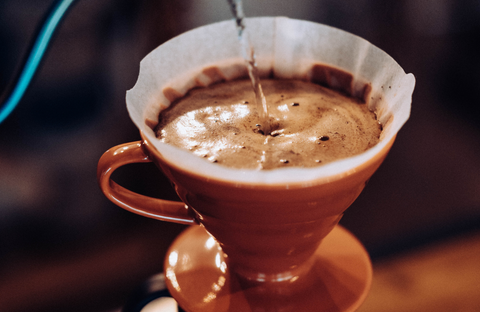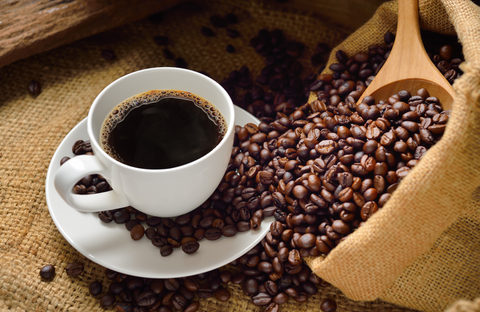When coffee is hand-dripped, the coffee powder absorbs the hot water and froths softly. What exactly is coffee foam?

The bubbles in coffee are carbon dioxide gas.
When coffee beans are heated by pouring hot water over them, the carbon dioxide gas contained in the beans is released all at once and bubbles form.

This gas is produced when the components contained in green coffee beans are decomposed by heat. Half of the carbon dioxide gas produced is released during roasting, and the other half remains in the coffee bean.
An important function of the bubble
An important function of the foam generated during hand drip is to absorb the coffee's impurities. When foam is generated in the dripper, it prevents the accumulation of impurities and other tastes. If you actually lick some of the foam, you will notice that it is very astringent. The foam is a very important part of the drip coffee experience.

Bubble=Flesh?
Half of the gas is released during roasting, but the other half remains in the bean. The gas is then released over time. This means that beans with more carbon dioxide gas remaining in them which have been roasted for a shorter period of time will produce more bubbles. This is the reason why well puffed beans are considered fresh. However, the more heat applied during roasting, the more carbon dioxide gas is produced. This means that deep-roasted beans contain more gas than shallow-roasted beans. Shallow-roasted beans, which do not contain much carbon dioxide gas to begin with, will not expand as much. Even decaffeinated beans will have less foam expansion due to the removal of caffeine.

Tips for brewing fluffy coffee foam
Using beans immediately after roasting will make the coffee froth up better, but this does not mean that the beans should be used straight away. It is best to use beans a few days after roasting, as freshly roasted beans are more active in releasing carbon dioxide gas which causes them to be bland!
If you want to drink the beans right after roasting, you can use a paper drip and use water at a lower temperature than usual to reduce the release of carbon dioxide gas. This helps to get closer to the original taste of the coffee.
When pouring hot water, gently divide it into three or four portions to the coffee grounds. It is important to carefully brew the coffee while checking the foam. Do not let the hot water drop all the way to the end, as this will mix in the impurities that were already contained in the foam.
Enjoy authentic coffee at home!


